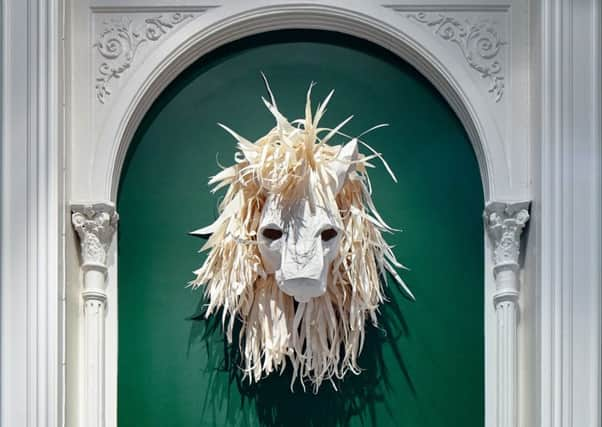Art reviews: Forms of Action | Oliver Laric


At Glasgow’s CCA After the Finish Line, a touching film by the artist Adelita Husni-Bey, takes the notion of injury, in this case of teenage American athletes, to explore the treacherous world of the American dream. In an eerily deserted shopping mall a gymnast uses the empty escalator as parallel bars and a group of girls talk about how injury impacted not just on their training but on their very sense of themselves. “My elbow and the rest of my body are at war,” explains one of them.
The implication of Husni’s-Bey’s film is of a wider loss however. The story of athletes from minority and marginalised communities succeeding in sport is a persistent narrative about individuals overcoming the odds. Does injury undo this story? And if so what happens next?
Advertisement
Hide AdAdvertisement
Hide AdThe film is part of Forms of Action a new exhibition that examines art practices whose impact is not just in exhibition form, but in the wider world and in social practice. The strength of the exhibition is to introduce Glasgow to some artists with which it might not be familiar. Its weakness is in suggesting that somehow these particular artists, or this show, forms a new perspective that differs radically from the kind of socially engaged or participatory art that has been with us for decades. Victoria Lomasko’s project providing art education within the Russian penal system is vital and revolutionary in its own context. But in the UK similar programmes have long been the province of the Koestler Trust, set up by the writer and ex-prisoner Arthur Koestler some 55 years ago.
It is fine line in such practice to
work out whether the outsider/ amateur role of the artist in the social field can bring fresh eyes and provocation and if an artist’s own expertise can bring a new skill set to social ills. The best of this kind of work can do so. Dimitri Launder’s work Towards a People’s Apothecary is a project by the designer and “artist gardener” to draw attention to herbal remedies in the urban setting. His online page suggests that the plant Ribwort Plantain is “a remedy for regulating blood sugar levels, perhaps a path towards change for Glasgow’s morbidly growing obesity crisis lies at its feet.” It’s a preposterous suggestion from someone with no public health credentials in a city where the world class experts at the Centre for Population Health have spent more than a decade trying to establish the causes, and counter the impact, of Glasgow’s health crisis.
There is, however, lots to like and think about in this show, most of all in a lovely, nuanced investigation of literary origins by Katia Kameli. Streams of Stories uses text, video and image to trace the multiple origins of La Fontaine’s Fables. It’s a meandering journey into classics of Sanksrit and Arabic literature, and a passionate defence of scholarship and the art of literary translation. Far from being new, Forms of Action turns out to have rich, ancient roots and important antecedents.
In 2012, when I was on the judging panel of the Contemporary Art Society’s Commission to Collect award, we gave the prize to the promising artist Oliver Laric, working with the Collection and Usher Gallery in Lincoln. Laric worked with museum curators and archaeologists to build a virtual collection of the museums’ objects which, once scanned, could be distributed digitally, 3D printed or manipulated as users saw fit without copyright restrictions. In theory a medieval font could be printed out as a domestic object, or an image of a Saxon water jug seamlessly inserted into a modern apartment in the digital environment of a computer game.
The point was not just to distribute the museum’s objects far outside its walls, but to think through what might happen if historical artefacts were not fixed but endlessly mutable. Laric was then best known for his ongoing work Versions, a series of sculptural objects, videos and images bent on undermining the cultural authority of original authentic objects and images and celebrating the hybrid, the sample, the rip-off and the knock off.
At Tramway there is a chance to see an untitled film by Laric that captures the melancholy undertow that accompanies his project. Laric’s film is a five minute sequence of animated transformations, some borrowed from a global pool of animation, some constructed at his own computer screen. A figure wrapped in warm seal skin becomes a polar bear, wolves turn into humans and humans become werewolves. It’s a bit Scooby Doo, and a wee bit Studio Ghibli. The background is a clutch of musical notes culled from the pop song Cry Me a River (that’s Justin Timberlake folks not Miss Ella Fitzgerald). Although the film’s top note is a celebration of the values of hybridity and transformation, one is somehow left with a mournful sense of instability and unease.
*Forms of Action until 12 March; Oliver Laric until 19 March